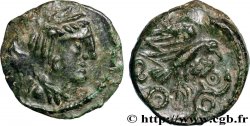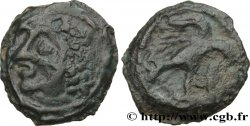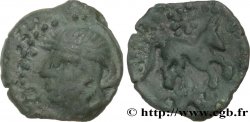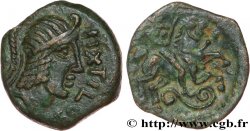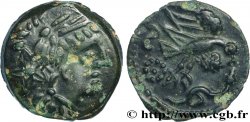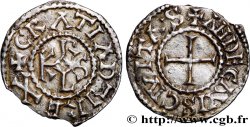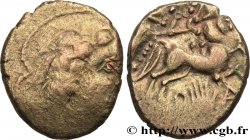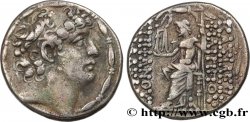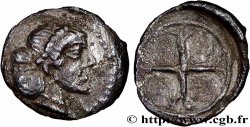Live auction - bga_612757 - GALLIA - CARNUTES (Area of the Beauce) Huitième de statère d’or à l’aigle, à la mèche tombant sur le front
Чтобы принять участие в торгах, вы должны войти в систему и стать подтвержденным участником аукциона. Войдите, чтобы сделать ставку. Ваш аккаунт будет подтвержден в течение 48 часов. Не ждите до закрытия торгов, чтобы зарегистрироваться.Сделав ставку на данный товар, вы вступаете в юридическое соглашение на покупку выбранного товара и нажатием кнопки «Сделать ставку» подтверждаете принятие вами условий интернет-аукционов cgb.fr.
Ставка может бить сделана только в полном эквиваленте евро. Торги закроются согласно времени, указанному в описании товара, все ставки, сделанные после закрытия торгов, учитываться не будут. Не следует откладывать предложение вашей ставки до последнего момента, так как система может не успеть обработать вашу заявку, и ваша ставка не будет принята. Более детальную информацию вы найдёте здесь: FAQ по интернет-аукционам.
Все ставки победителей подлежат комиссии 18%.
Все ставки победителей подлежат комиссии 18%.
| Оценить : | 2 000 € |
| Цена : | 1 250 € |
| Максимальная предлагаемая цена : | 1 250 € |
| Конец торгов : | 08 September 2020 15:33:43 |
| Участников : | 2 Участников |
Тип Huitième de statère d’or à l’aigle, à la mèche tombant sur le front
Дата: Ier siècle avant J.-C.
Монетный двор / Город: Chartres (28)
Металл: gold
Диаметр: 9,5 mm
Ориентация осей монеты: 3 h.
Вес: 0,94 g.
Редкость: R3
Комментарии о состоянии
Très bel exemplaire de style fin au revers. Joli droit présentant une tête inhabituelle
Лицевая сторона
Аверс: легенда: ANÉPIGRAPHE.
Аверс: описание: Tête à droite, la chevelure en grosses mèches.
Обратная сторона
Реверс: легенда: ANÉPIGRAPHE.
Реверс: Описание: Aigle à gauche tenant un objet ovale avec deux globules dans ses serres.
Комментарий
Sur les quatre huitièmes de statères illustrés dans le Nouvel Atlas, cette monnaie correspond au DT. S 2568 B, avec ce même style de droit et un revers identique.
Ce rare monnayage divisionnaire d’or est bien mieux connu depuis la parution de l’article de N. Manios dans les Cahiers de la SENA n° 190 de décembre 2011 “Les huitièmes de statère à l’aigle carnutes”.
C’est la première fois que nous présentons ce type à la vente !.
Of the four eighths of staters illustrated in the New Atlas, this coin corresponds to DT. S 2568 B, with this same obverse style and an identical reverse. This rare gold fractional coinage has become much better known since the publication of N. Manios' article in Cahiers de la SENA No. 190 of December 2011, “The eighths of stater with the carnutes eagle.” This is the first time we have offered this type for sale!
Ce rare monnayage divisionnaire d’or est bien mieux connu depuis la parution de l’article de N. Manios dans les Cahiers de la SENA n° 190 de décembre 2011 “Les huitièmes de statère à l’aigle carnutes”.
C’est la première fois que nous présentons ce type à la vente !.
Of the four eighths of staters illustrated in the New Atlas, this coin corresponds to DT. S 2568 B, with this same obverse style and an identical reverse. This rare gold fractional coinage has become much better known since the publication of N. Manios' article in Cahiers de la SENA No. 190 of December 2011, “The eighths of stater with the carnutes eagle.” This is the first time we have offered this type for sale!







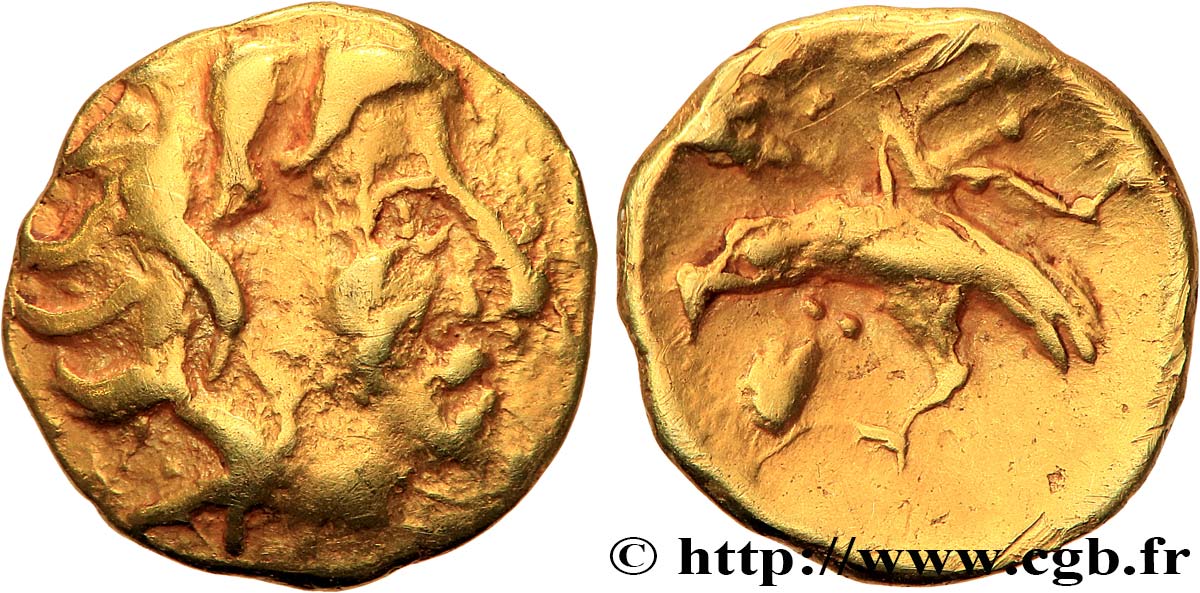
 Cообщить об ошибке
Cообщить об ошибке Распечатать страницу
Распечатать страницу Отправить мой выбор
Отправить мой выбор Задать вопрос
Задать вопрос Consign / sell
Consign / sell
 Информация
Информация